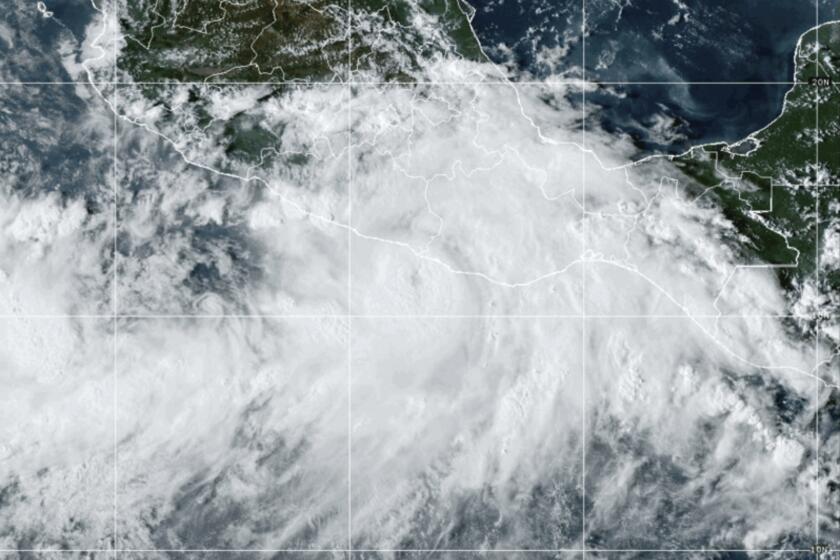UC Report on Levees Sees Institutional Failings in Corps
The failure of New Orleans’ levees during Hurricane Katrina reflected decades of technical and institutional problems in the Army Corps of Engineers’ efforts to protect the city, according to investigators who will publish their findings Monday.
The report from the UC Berkeley engineering department says the corps lacked a coherent strategy for protecting the city.
The organization’s storied technical prowess suffered when it was forced to deal with modern political realities, particularly in Louisiana, according UC Berkeley professor Bob Bea.
At the same time, the corps has suffered an erosion of its technical capabilities. “You have to put the engineering back in the Corps of Engineers,” Bea said.
The implications of the report are far-reaching because the corps is responsible for civil works projects that guard public safety in almost every corner of the nation.
Berkeley’s engineering department has been investigating the levee failures under sponsorship of the National Science Foundation since last fall. It has often told the corps things it did not want to hear.
The latest findings will say the corps is infected with the same organizational problems as NASA, which was unable to recognize abundant evidence of safety risks facing the space shuttle before the Columbia accident in 2003.
Although many corps experts agree the institution needs a close examination, they say the problems are bigger than the corps itself.
Congress and many Louisiana government agencies played key roles in deciding the flawed design of the levees that were breached during Katrina.
“I don’t think there is any question that the corps has institutional issues,” said Thomas Sands, a former two-star general in the corps who lives in New Orleans and commanded operations there. “But those issues don’t relate just to the corps. If anybody points the finger only at the corps, you know it is dishonest.”
The Berkeley report is one of three major investigations landing within a four-week period. This month, the Senate Committee on Homeland Security and Governmental Affairs released a 749-page report on the causes of and responses to Katrina’s aftermath. And June 1, the corps will release a 7,000-page report on the levee failures.
“It is the engineering document of record that people will be studying for years,” said Wayne Stroupe, a spokesman for the investigation.
But the corps’ probe will examine only the technical causes of the levee failures, not the roots of past decisions.
Edward Wenk Jr., a science advisor to three presidents and a widely recognized engineering expert, has written one chapter of the Berkeley report.
Wenk cites the decades of success of the Navy’s nuclear submarine operations as evidence that government technical organizations can maintain high levels of competency over long periods.
During the 1990s, the corps was pushed to outsource some of its most important engineering functions in a mistaken response to critics who said it was doing a poor job managing major projects and keeping them within budget, said Berkeley’s Bea. Instead of putting the emphasis on technical engineering issues, the corps shifted gears to program management.
“We are going to say that you have to have ‘insourcing,’ ” Bea said, in which the corps would conduct more of their detailed engineering work in-house.
That agenda will be difficult, because like many federal agencies the corps will be facing mass retirements of baby boomer engineers in coming years.
Bea noted that the corps has roughly 25,000 civilian employees commanded by 800 uniformed officers and is already trying to modernize the way it does business.
But its missions are still blurry. It is chartered to conduct civil engineering for the nation’s navigation and water supply, which clearly includes building levees. In New Orleans, its mission to provide navigable waterways often conflicted with hurricane protection. “The corps was trying to satisfy them all,” Bea said.
Another complication is that much of the corps leadership graduated from the Military Academy at West Point, a good school but not among the top civil engineering schools in the nation.
Also, levee design is not among civil engineering’s most glamorous disciplines, he said.
The Berkeley report offers a comprehensive technical analysis of the storm-wall failures during Katrina.
It is expected to disagree with corps investigators about the exact mode of failure on the 17th Street and London Avenue levees.
Army investigators think those failures occurred in weak clay layers. Raymond Seed, head of the Berkeley investigation, said it most likely occurred in layers of weak organic peat. The disagreement goes to the issue of whose technical analysis is superior, though in either case, the levees failed because of weak soil and foundation.
Sands said the rush to condemn the corps after Katrina had some political motivation. The attacks often come from Louisiana officials who want to blame the federal government for the levee failures and bolster their demands for more federal funding.
But the failures were part of a much larger institutional process that was controlled by state and local officials, who bear some of the responsibility for flawed decisions.
Sands said he had little doubt that the outcome of the investigations would have a lasting effect on the corps, but it was too early to predict the outcome.
“A significant portion of the problem, the dominant portion, is institutional, and it does not just apply to the federal government,” Sands said. “It applies to all the institutions that deal with water resource projects in the U.S.”
More to Read
Sign up for Essential California
The most important California stories and recommendations in your inbox every morning.
You may occasionally receive promotional content from the Los Angeles Times.











